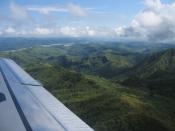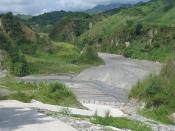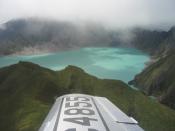AIM
This report is trying to describe in detail what is known as the second most powerful volcano eruption of the 20th century, Mount Pinatubo eruption, as well as how it erupted and what effects it had on the people in the surrounding area.
INTRODUCTION
The time was 6am on Sunday the 9th of June 1991 when the 2nd most devastating eruption of the 20th century occurred. It was in the northern Philippines. The name of the volcano is Mount Pinatubo.
The Mt. Pinatubo erupted because the small Philippine Plate moved west and slid under the large Indo-Australian Plate.
One year before, on the 16th of July 1990 an earthquake with a magnitude of 7.8 Richter scale struck 60 miles (100 kilometres) northeast of Mount Pinatubo on the island of Luzon on the Philippines that squeezed the crust under Mount Pinatubo.
Landslides, minor earthquakes and an increase in steam emissions went on for a few months before the eruption.
From March to April 1991 magma travelled 20 miles (32 kilometres) through the surface under Mount Pinatubo. This caused powerful steam explosion north of the volcano, emissions of sulphur dioxide gas and thousands of small earthquakes that occurred underneath Mount Pinatubo through April, May and early June.
On April the 2nd ash shot up through vents reaching heights ranging from 500 to 800 metres high. On the 5th of April a seismic station at Sitio Yamut recorded 233 volcanic quakes.
At 7:30am on June 3rd Mount Pinatubo ejected ash for the first time for about 30 minutes. The day before the eruption, on the 8th of June, an explosion type earthquake was recorded at about 3:25 in the afternoon. This is what happened in the eruption...
THE ERUPTION
From the 7th of June to the 12th magma reached the surface but...


